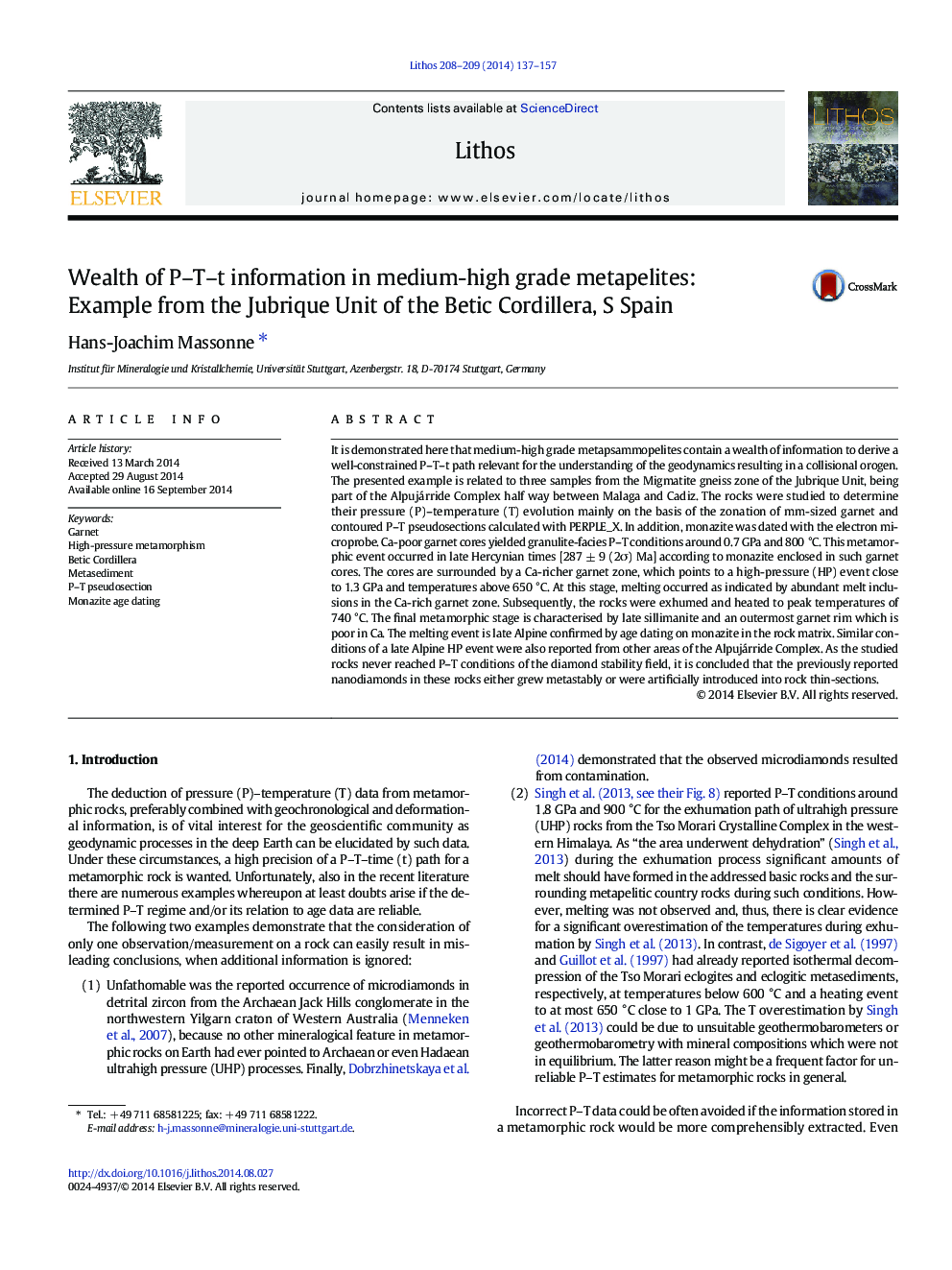| کد مقاله | کد نشریه | سال انتشار | مقاله انگلیسی | نسخه تمام متن |
|---|---|---|---|---|
| 4715908 | 1638671 | 2014 | 21 صفحه PDF | دانلود رایگان |
عنوان انگلیسی مقاله ISI
Wealth of P-T-t information in medium-high grade metapelites: Example from the Jubrique Unit of the Betic Cordillera, S Spain
دانلود مقاله + سفارش ترجمه
دانلود مقاله ISI انگلیسی
رایگان برای ایرانیان
کلمات کلیدی
موضوعات مرتبط
مهندسی و علوم پایه
علوم زمین و سیارات
ژئوشیمی و پترولوژی
پیش نمایش صفحه اول مقاله

چکیده انگلیسی
It is demonstrated here that medium-high grade metapsammopelites contain a wealth of information to derive a well-constrained P-T-t path relevant for the understanding of the geodynamics resulting in a collisional orogen. The presented example is related to three samples from the Migmatite gneiss zone of the Jubrique Unit, being part of the Alpujárride Complex half way between Malaga and Cadiz. The rocks were studied to determine their pressure (P)-temperature (T) evolution mainly on the basis of the zonation of mm-sized garnet and contoured P-T pseudosections calculated with PERPLE_X. In addition, monazite was dated with the electron microprobe. Ca-poor garnet cores yielded granulite-facies P-T conditions around 0.7 GPa and 800 °C. This metamorphic event occurred in late Hercynian times [287 ± 9 (2Ï) Ma] according to monazite enclosed in such garnet cores. The cores are surrounded by a Ca-richer garnet zone, which points to a high-pressure (HP) event close to 1.3 GPa and temperatures above 650 °C. At this stage, melting occurred as indicated by abundant melt inclusions in the Ca-rich garnet zone. Subsequently, the rocks were exhumed and heated to peak temperatures of 740 °C. The final metamorphic stage is characterised by late sillimanite and an outermost garnet rim which is poor in Ca. The melting event is late Alpine confirmed by age dating on monazite in the rock matrix. Similar conditions of a late Alpine HP event were also reported from other areas of the Alpujárride Complex. As the studied rocks never reached P-T conditions of the diamond stability field, it is concluded that the previously reported nanodiamonds in these rocks either grew metastably or were artificially introduced into rock thin-sections.
ناشر
Database: Elsevier - ScienceDirect (ساینس دایرکت)
Journal: Lithos - Volumes 208â209, November 2014, Pages 137-157
Journal: Lithos - Volumes 208â209, November 2014, Pages 137-157
نویسندگان
Hans-Joachim Massonne,